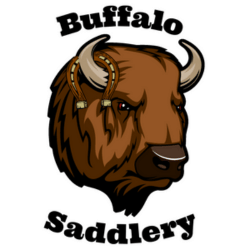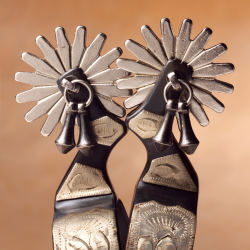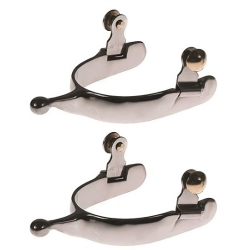Welcome to our blog post all about understanding the purpose of a breast collar on a horse. As horse enthusiasts, we know that there are many aspects to consider when it comes to riding and caring for these magnificent creatures. One important piece of tack that often goes overlooked is the breast collar. In this post, we will delve into the definition of a breast collar, the different types available, and its various components. Most importantly, we will explore the crucial role a breast collar plays in preventing saddle slippage, providing rider stability, and ensuring the horse's comfort. We will also provide valuable tips on how to properly fit and maintain a breast collar to ensure its effectiveness and longevity. So, saddle up and join us as we dive into the world of breast collars and discover their significance in horse riding.
Introduction: The Role of Tack in Horse Riding
Tack plays a vital role in horse riding, providing the necessary equipment to control and communicate with the horse effectively. It encompasses a wide range of items, from saddles and bridles to reins and stirrups. Each piece of tack serves a specific purpose and contributes to the overall safety and comfort of both the rider and the horse.
When it comes to riding a horse, the connection between the rider and the horse is crucial. Tack serves as the bridge that facilitates this connection, allowing the rider to communicate their intentions and cues to the horse. It helps maintain balance, control, and stability throughout the ride.
Moreover, tack also ensures the well-being and comfort of the horse. It should fit properly and be appropriately adjusted to avoid discomfort, pain, or injury. The right tack can enhance the horse's performance, allowing them to move freely and comfortably while carrying the rider's weight.
Understanding the role of tack, including the breast collar, is essential for any horse rider. It not only enhances the riding experience but also promotes the welfare and safety of both horse and rider. In the following sections, we will focus specifically on the purpose and significance of a breast collar in horse riding. So, let's continue our journey into the world of tack and explore the importance of a breast collar on a horse.
What is a Breast Collar?
A breast collar is a piece of tack that is commonly used in horse riding. It is designed to sit across the horse's chest, just above the withers, and is secured around the neck and girth area. The breast collar consists of several components, including straps, buckles, and sometimes additional attachments such as a martingale or a pulling collar.
The primary purpose of a breast collar is to help distribute the weight of the saddle and rider more evenly across the horse's chest. By doing so, it helps prevent the saddle from slipping backward, especially during activities that involve quick turns, jumps, or steep inclines. A breast collar provides additional stability and security, keeping the saddle in place and reducing the risk of accidents or discomfort for both horse and rider.
Breast collars come in various types and designs to suit different riding disciplines and preferences. Some common types include the traditional Western-style breast collar, which is typically made of leather and features a wide, contoured shape. There are also English-style breast collars, which are usually less bulky and designed to be used with English saddles.
The parts of a breast collar include the neck strap, which goes around the horse's neck, and the girth strap, which attaches to the girth or cinch. Additionally, some breast collars may have a center strap that connects the neck and girth straps, providing additional stability and preventing the breast collar from sliding sideways.
In the next section, we will explore the purpose and benefits of using a breast collar on a horse in more detail.
The Purpose of a Breast Collar on a Horse
A breast collar serves several important purposes when used on a horse. Understanding these purposes is crucial for any rider who wants to ensure the safety, comfort, and overall well-being of both themselves and their horse. Let's explore the primary reasons why a breast collar is used:
Preventing Saddle Slippage
One of the main purposes of a breast collar is to prevent saddle slippage. During riding activities that involve quick turns, sudden stops, or steep inclines, the saddle may shift backward, causing discomfort and potentially leading to accidents. The breast collar helps to anchor the saddle in place by providing additional support and stability across the horse's chest. It reduces the risk of the saddle sliding back, keeping it securely positioned and allowing the rider to maintain balance and control.
Providing Rider Stability
A breast collar also plays a role in providing rider stability. When riding over uneven terrain or engaging in activities such as jumping or trail riding, the horse's movements can be unpredictable. The breast collar helps the rider stay centered and secure in the saddle by preventing the saddle from shifting or tipping backward. This stability allows the rider to maintain proper balance and control, reducing the likelihood of falls or accidents.
Ensuring Horse's Comfort
In addition to benefiting the rider, a well-fitted breast collar also ensures the horse's comfort. The breast collar helps distribute the weight of the saddle and rider more evenly across the horse's chest, reducing pressure points and potential discomfort. It prevents the saddle from pressing down on the horse's withers, which can cause pain and restrict the horse's movement. By providing support and stability, the breast collar allows the horse to move freely and comfortably, enhancing their overall performance and well-being.
Understanding the purpose of a breast collar is essential for riders of all disciplines. Whether you are engaged in Western riding, English riding, or any other equestrian activity, a properly fitted and used breast collar can significantly enhance the riding experience for both horse and rider. In the next section, we will delve into the details of how to properly fit a breast collar on a horse.
How to Properly Fit a Breast Collar
Properly fitting a breast collar is crucial to ensure its effectiveness and to maintain the comfort and safety of the horse. Here are the key steps to follow when fitting a breast collar:
Choosing the Right Size
Before fitting a breast collar, it is important to select the correct size for your horse. Breast collars come in various sizes, typically ranging from pony to draft sizes. To determine the appropriate size, measure the circumference of your horse's chest just behind the front legs. This measurement will help you choose a breast collar that fits snugly without being too tight or too loose.
Adjusting the Straps
Once you have chosen the right size breast collar, the next step is to adjust the straps for a proper fit. Begin by attaching the neck strap around the horse's neck, making sure it is snug but not overly tight. The neck strap should sit just above the point of the shoulder, allowing enough space for the horse to move comfortably.
Next, adjust the girth strap. It should be attached to the girth or cinch, positioned far enough back to provide support without interfering with the horse's movement. Ensure that the girth strap is snug, but still allows the horse to breathe and move freely.
If your breast collar includes a center strap, adjust it to the appropriate length, ensuring it is centered and straight. The center strap provides additional stability and prevents the breast collar from sliding sideways during riding.
Checking for Comfort and Secure Fit
Once all the straps are adjusted, it is essential to check for both comfort and a secure fit. Make sure the breast collar is not causing any discomfort or rubbing on the horse's chest or shoulders. Run your hand along the inside of the breast collar to ensure there are no rough edges or areas that could cause irritation.
Additionally, check that the breast collar is secure but not overly tight. You should be able to fit a few fingers comfortably between the breast collar and the horse's chest. This allows for proper movement and prevents any restriction or discomfort.
Regularly check the fit of the breast collar during and after riding sessions. Adjustments may be necessary as the horse's body shape and condition can change over time.
In the next section, we will explore the importance of maintaining and cleaning a breast collar to ensure its longevity and effectiveness.
Maintaining and Cleaning a Breast Collar
Proper maintenance and cleaning of a breast collar are essential to ensure its longevity and functionality. Here are some important guidelines to follow for maintaining and cleaning your breast collar:
Regular Cleaning and Inspection
Regularly clean your breast collar to remove dirt, sweat, and grime that can accumulate over time. Start by brushing off any loose dirt or debris with a soft brush or cloth. Pay close attention to the underside and any areas that come into direct contact with the horse's skin.
Next, use a damp cloth or sponge and a mild soap specifically formulated for leather or synthetic materials to clean the breast collar thoroughly. Gently scrub the surface, making sure to reach all the crevices and straps. Avoid using harsh chemicals or abrasive cleaners that can damage the material.
After cleaning, rinse off the soap residue with clean water and wipe the breast collar dry with a soft towel. Avoid exposing the breast collar to direct sunlight or excessive heat, as this can cause the material to dry out and crack.
Regularly inspect the breast collar for any signs of wear and tear, such as loose stitching, cracked leather, or damaged buckles. Address any issues promptly to prevent further damage and ensure the safety of both horse and rider.
Proper Storage
When not in use, store the breast collar in a clean and dry environment. Avoid storing it in a damp or humid area, as this can promote the growth of mold and mildew. It is recommended to hang the breast collar or lay it flat in a well-ventilated space.
To prevent the breast collar from losing its shape, avoid folding or bending it excessively. If necessary, use a padded hanger or a breast collar storage bag to maintain its form and protect it from dust and other contaminants.
When to Replace a Breast Collar
Over time, a breast collar may experience significant wear and tear. It is important to recognize when it is time to replace the breast collar to ensure the safety and comfort of both horse and rider. Signs that indicate the need for replacement include:
- Severe cracks or tears in the leather or material
- Excessive stretching or fraying of the straps
- Broken or damaged buckles, snaps, or attachments
- Irreversible damage to the structure of the breast collar
Regularly assess the condition of your breast collar and consult with a professional if you are unsure about its integrity. Investing in a new breast collar when necessary will ensure the continued effectiveness and safety of your riding equipment.
In the next section, we will conclude our discussion on understanding the purpose of a breast collar on a horse and its significance in horse riding.












































